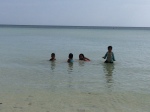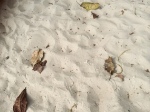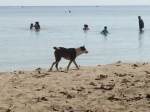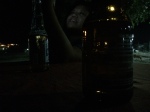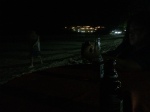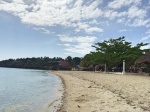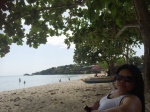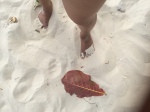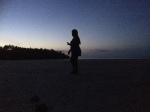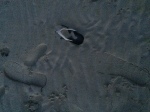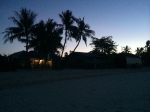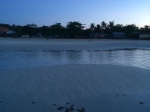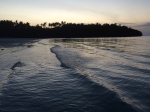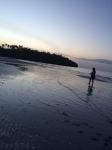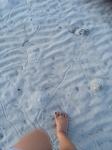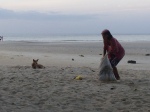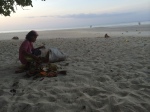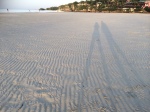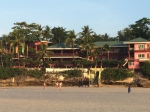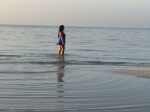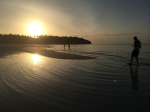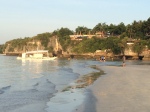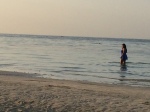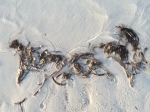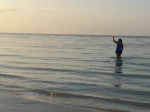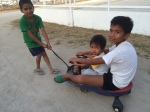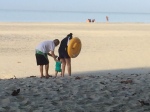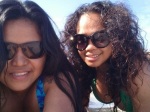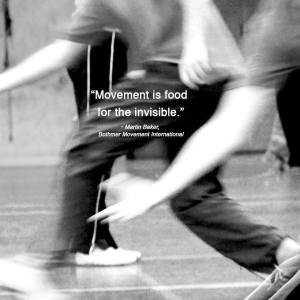The first time I went to Camotes was in 2005. I remember how I was suspended in awe of the beauty that had been waiting for us. As the motorized banca that we rented was about to dock, approaching where the receding sea waves that reached the shore come back and join the body of water again, I thought we found a paradise. I went back a year after, and went again last month—8 or 9 years after.
I often describe Camotes as “guapa” when I talk to my friends about it. Cebu has several white-sand beaches. Some are powdery fine while the others, a little more coarse. Camotes’ is powdery fine. But it’s not just the quality of sand that gives it a feminine feature. Santiago Bay, where we were exactly in Camotes, has a mass of elevated land with lush trees, mostly, coconut, extending to the sea on both sides of the bay. I liken it to a sense of boundary which women, in general, have. The shoreline is not very long so one can definitely walk the entire stretch of the bay. Some who stay at the beachfront by the bay go walk to check Santiago Bay Garden and Resort, a more high-end resort that sits atop the elevated land to your right if you are facing the sea.
That the water is crystal clear—in varying shades of blue, deep blue and green, if you look from the shore—is not anything new about most beaches in Cebu. But, yes, Camotes has it. The first time I went there, we stayed at a resort called Payag, literally a nipa hut, right at the beachfront by the bay. The sea view was totally unobstructed, which is still the case now. For this recent visit, I stayed at Masamayor, with my friend Carla, where we did in 2006 or 2007. More concrete structures have now been erected a few meters from the shore which makes it less unadulterated than it was years ago. But the beach is still glorious in its beauty.
We woke up very early on our second day, around 4:30, and went out for a walk around 5 am or a little past that. It was low tide. The morning was peaceful. The breeze, light and touchy. The air was cool. It was perfect for deep breathing and for emptying the mind with the worries of the city, allowing the self to get drawn to the details of the sea—like the bare beach sand, moist from the water that had just receded and the rustic colors that were starting to infuse the low sky as the sun was starting to rise. We picked up some trash on the beach: a foil pack of junk food, which, obviously, had just been dropped, or thrown, rather, within the hour we went walking and taking photos as well as a few pieces of thin plastic that had lodged in the moist shore.
Santiago Bay is a public beach. I say, the best way for locals to appreciate what they have and enjoy. You see them resting in cottages or waiting for customers who’d like to pay for their services to cook for them or to take them to a tour around Camotes Islands.
Santiago Bay is just a piece of Camotes. There is more to explore and discover. But the beauty and charm of Camotes can only be preserved for as long as the locals help protect the sea from garbage and pollution and as long as the visiting tourists and travelers do the same.

